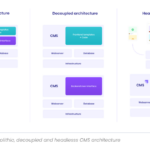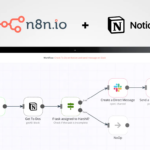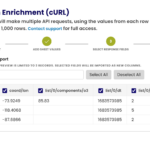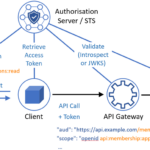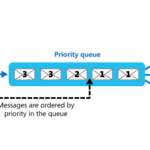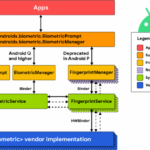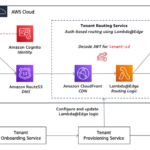API linting is a process of validating and checking the quality of API code and documentation against a set of predefined rules and best practices. It helps ensure consistency, correctness, and compliance with standards across API projects. By using API linting tools, developers can identify potential issues, errors, or inefficiencies early in the development process, leading to better quality APIs.
To use API linting for quality assurance, developers can integrate linting tools into their development workflow. These tools can automatically analyze API code and documentation for errors, style violations, security vulnerabilities, and performance issues. By following the recommendations provided by the linting tools, developers can improve the overall quality of their APIs and reduce the likelihood of bugs or issues in production.
In summary, API linting is a valuable practice for maintaining high-quality APIs, improving developer productivity, and ensuring consistent adherence to coding standards and best practices in APIs & Web Services development.
API linting is an essential process in the development of APIs (Application Programming Interfaces) aimed at ensuring that APIs adhere to a predefined set of rules, standards, and best practices. This practice helps in catching errors and inconsistencies early in the development lifecycle, enhancing the overall quality of APIs and ensuring seamless integration within web services. In this article, we will delve into the concept of API linting, its importance, the tools available, and how to effectively implement it for quality assurance in your API projects.
Understanding API Linting
API linting is analogous to code linting, which checks code for potential errors or stylistic issues. It evaluates the structure, syntax, and compliance of API definitions with the defined standards. Linting tools analyze APIs written in formats such as OpenAPI (formerly Swagger), RAML, or GraphQL schema documents, identifying problems that could lead to development delays or unexpected behavior in production.
The primary goal of API linting is to ensure that APIs are not just functionally correct but also easy to use and understand. By enforcing consistency in API design, linting helps maintain high usability and simplicity for developers consuming the APIs.
Importance of API Linting
Quality Assurance plays a crucial role in any software development process, but it is especially critical in the realm of APIs and web services. Here are several reasons why API linting is vital:
- Error Detection: Linting helps catch syntax errors and potential bugs early, saving time during later stages of development.
- Standardization: By enforcing coding standards and API design principles, linting results in more readable and maintainable APIs.
- Improved Documentation: Properly defined APIs are self-documenting, making it easier for developers who utilize these APIs.
- Enhanced Collaboration: A consistent approach to API design facilitates collaboration among teams working on different parts of a project.
- Streamlined Integration: It reduces integration issues for other developers who rely on these APIs, leading to faster development cycles.
Types of API Linting
API linting can be categorized into different types based on the specific aspects it checks:
1. Syntax Linting
This checks for correct syntax within API definitions, ensuring that the structure adheres to format specifications. It primarily focuses on identifying typographical errors, missing fields, and incorrect data types.
2. Semantic Linting
Semantic linting goes a step further by examining the meaning and logical structure behind the API. It helps identify issues like improperly defined endpoints, inconsistent response formats, and improper status codes.
3. Style Linting
Style linting enforces best practices in API design, such as naming conventions, response structure, and documentation completeness. It ensures that APIs remain user-friendly and easy to consume.
Popular API Linting Tools
There are several powerful tools available for API linting, each with its own set of features. Here are some of the most popular:
- Swagger Editor: An open-source tool that allows developers to design, document, and lint their APIs using OpenAPI specifications.
- Spectral: A flexible, extensible, and powerful linter for OpenAPI and AsyncAPI specifications, offering customizable rules.
- Prism: A tool that allows for the mocking of APIs based on OpenAPI definitions while providing linting capabilities.
- OpenAPI Lint: This linter checks OpenAPI definitions for logical errors, unnecessary elements, and unused paths.
- RAML Lint: A dedicated tool for linting RAML files, helping to ensure that RESTful APIs using RAML are well-structured and error-free.
How to Implement API Linting
Implementing API linting requires integrating it into the API development process. Here are the steps to effectively use linting for quality assurance:
1. Define Standards
Before you begin linting, establish clear coding standards and guidelines that your API should comply with. This includes consistency in naming conventions, HTTP protocols, response structures, and error handling strategies.
2. Choose the Right Tool
Select an appropriate linting tool based on the specifications of your API (OpenAPI, RAML, etc.). Depending on your team’s needs, you may choose a tool that offers a user-friendly interface or one that integrates with existing CI/CD (Continuous Integration/Continuous Deployment) pipelines.
3. Integrate with CI/CD Pipelines
Incorporate linting into your CI/CD process to automatically check your API definitions whenever changes occur. It helps maintain quality and avoids the accumulation of unnoticed errors.
4. Conduct Regular Reviews
Even with automated checks, conduct periodic manual reviews of your API design and implementation. This can help identify best practices and improve consistency, which may not always be captured through automation.
5. Provide Feedback and Training
Encourage team members to provide feedback on common linting issues and offer training sessions on best practices in API design. Education plays a significant role in fostering a quality-first mindset in the team.
Best Practices for API Linting
To maximize the benefits of API linting, it’s essential to follow some best practices:
- Use a Configurable Linter: Select a linter that allows customization of rules to fit your project’s specific needs and requirements.
- Adopt a Version Control System: Keep your API definitions under version control to track changes and avoid potential regressions.
- Encourage Team Participation: Involve your entire development team in the linting process to promote accountability and adherence to standards.
- Regularly Update Linting Rules: As your API evolves, continuously update your linting rules to keep pace with changes in technology and industry best practices.
- Monitor API Usage: Use analytics to understand how developers interact with your API and adjust your linting strategy accordingly.
Challenges in API Linting
While the advantages of API linting are significant, developers may face several challenges:
- Tool Limitations: Some linting tools may not catch all potential issues, leading to incomplete assessments of API quality.
- False Positives: Linting can sometimes flag legitimate code as problematic, which can create unnecessary overhead in the development process.
- Resistance to Change: Teams may be resistant to adopting new linting practices, especially if they require significant shifts in workflow.
By acknowledging these challenges up front and planning corresponding strategies, organizations can further enhance the quality assurance aspect of their APIs through effective linting practices.
Conclusion
API linting is a critical practice for ensuring the quality and consistency of APIs. By incorporating linting tools and strategies into your development workflow, you can significantly improve the reliability and usability of your APIs, leading to a better experience for both developers and end-users alike.
API linting is an essential tool for ensuring the quality and consistency of API code by identifying potential issues and enforcing best practices. By incorporating API linting into the development process, teams can streamline their workflows, improve overall code quality, and mitigate potential errors before they impact end users. Utilizing API linting tools such as ESLint or Prettier can help developers maintain code standards and enhance the overall reliability of API services, ultimately leading to a more efficient and robust development process.

